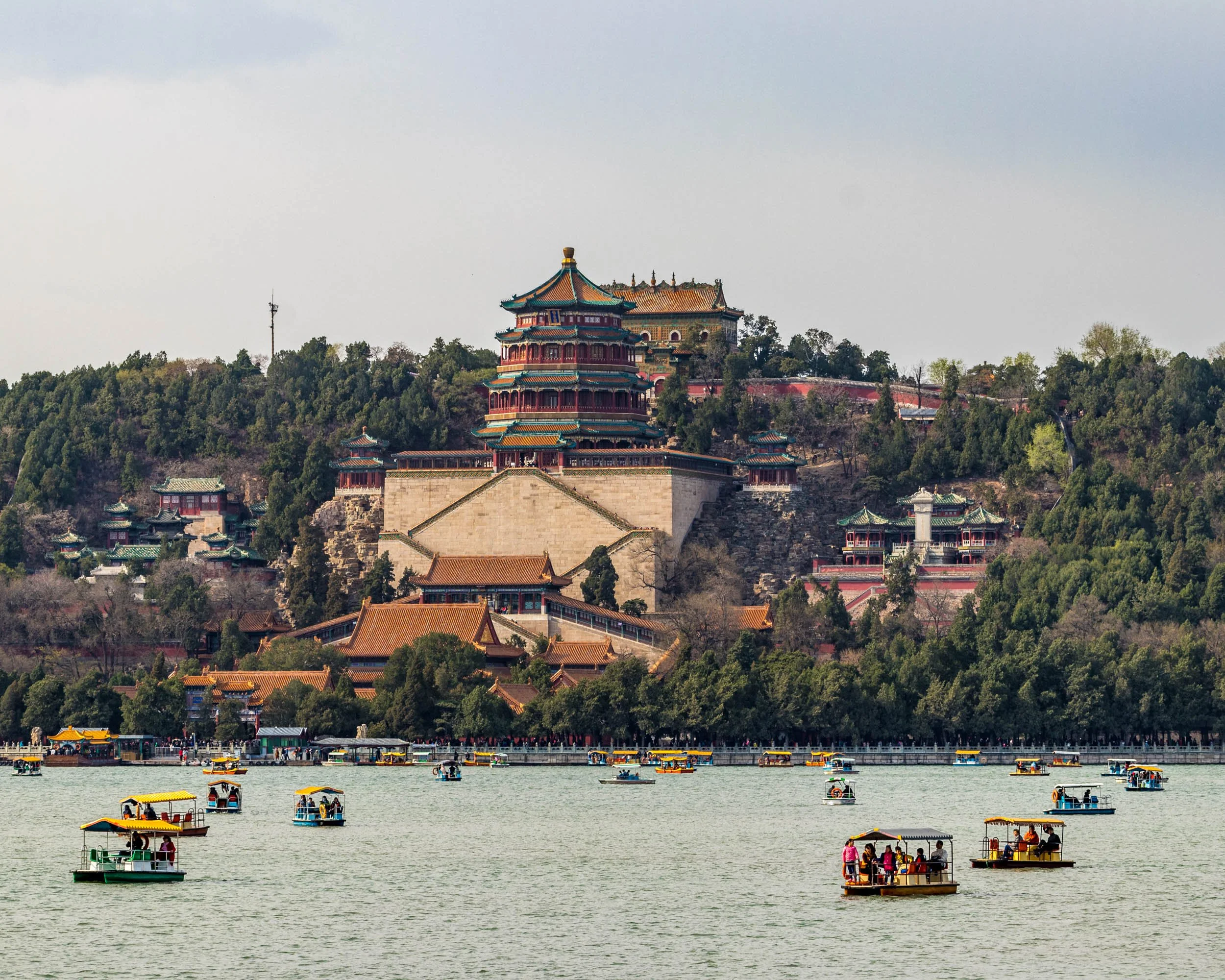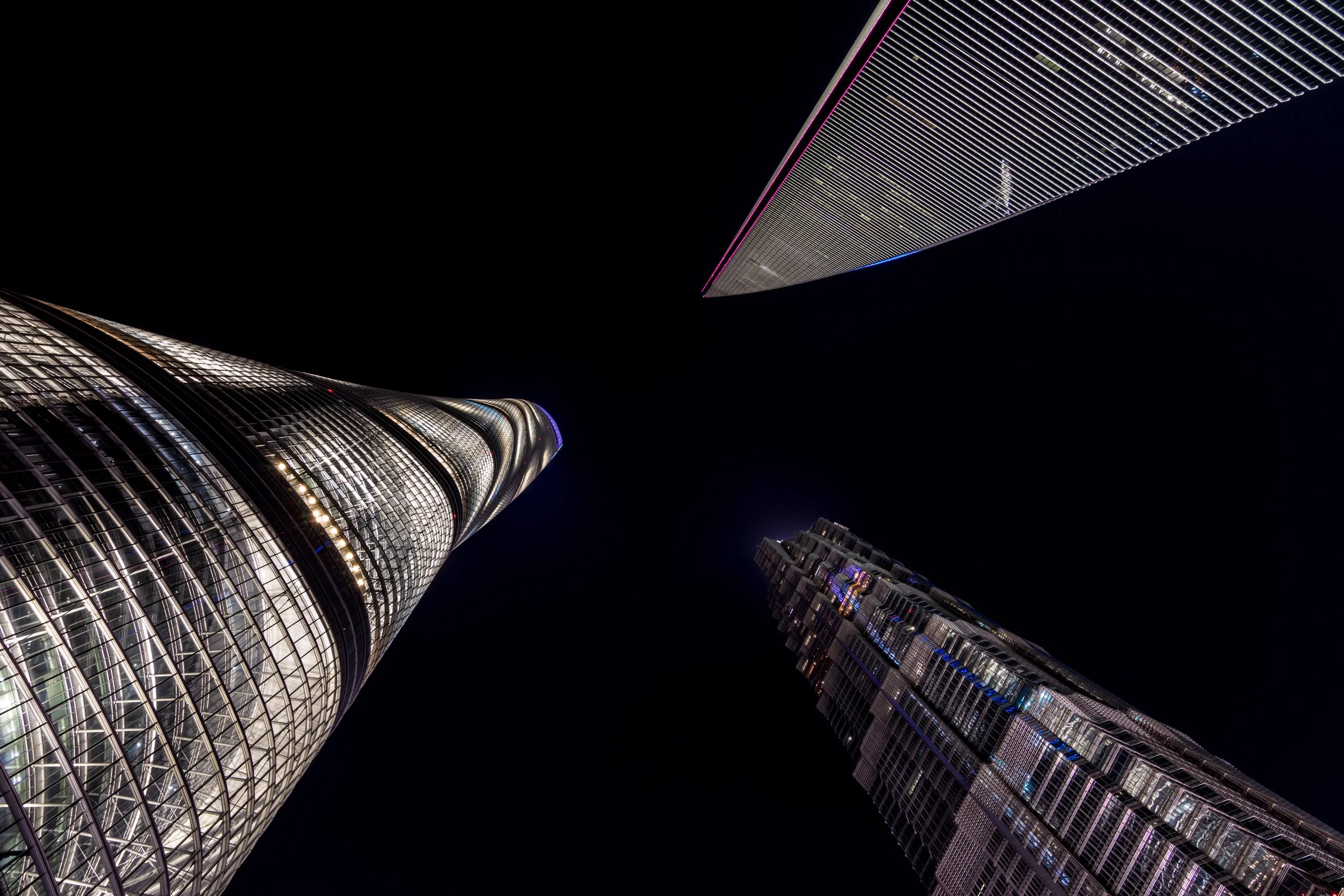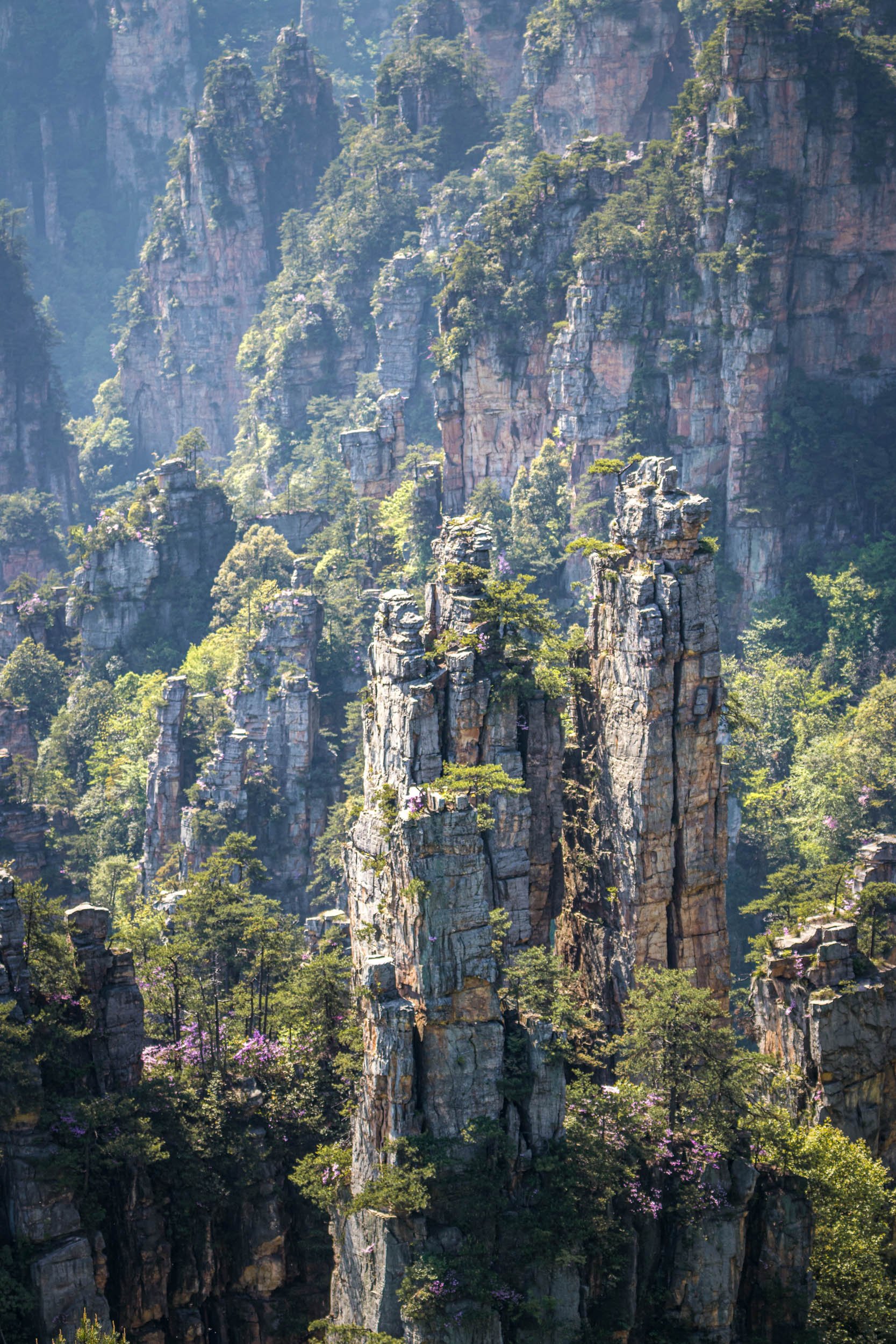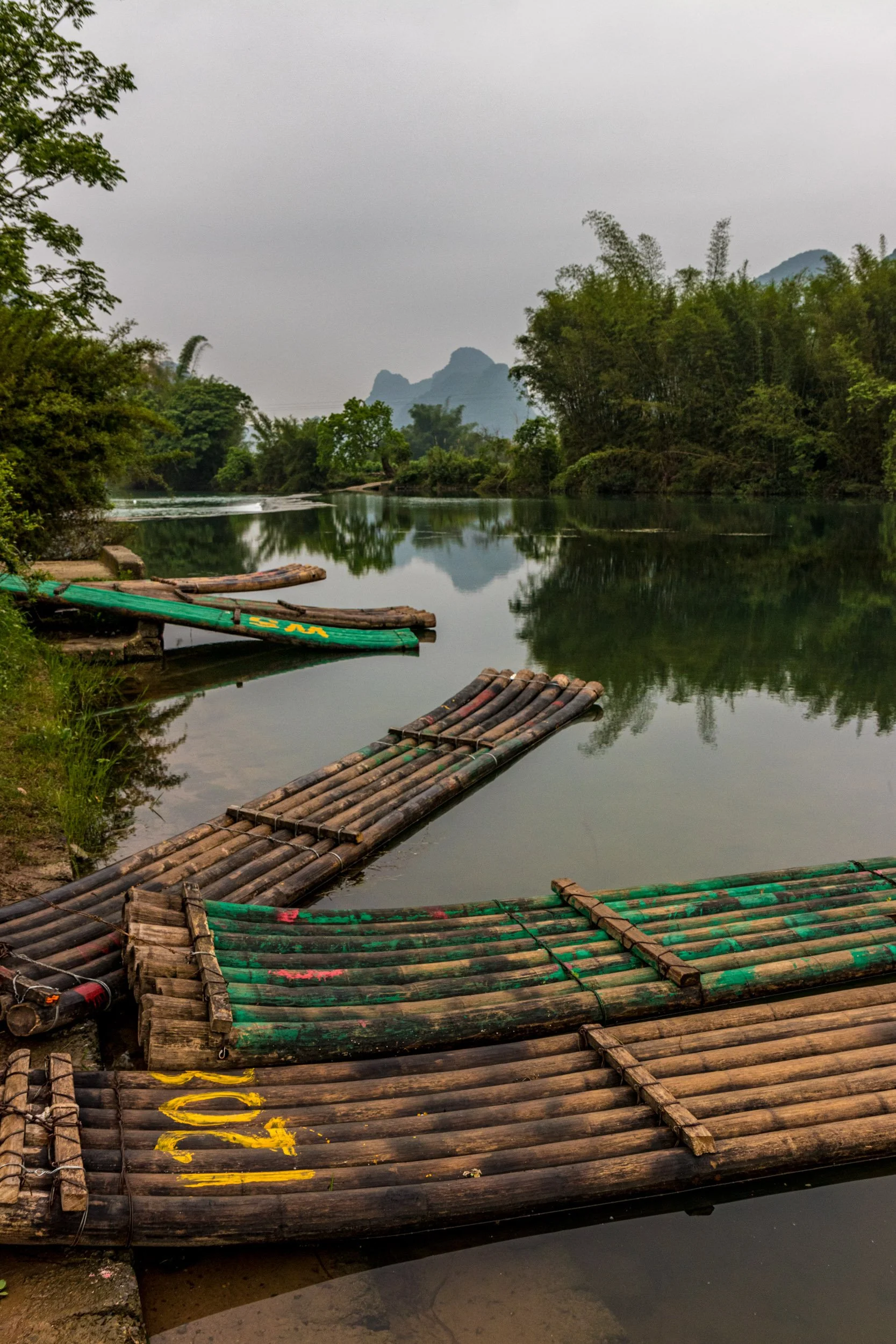
China
Ten years ago I wouldn't have thought that I visit China some day, but here I am writing something about my visit in 2018 during my sabbatical of almost four months.
Details
Visit: April 4th - April 26th 2018
Season: Spring
Start / End: Beijing / Yangshuo
Transport: Train, Aircraft, Boat, Taxi/Private Shuttles
I still had a lot of respect before this trip, especially for the language and that I not only don’t understand a thing, I also can’t read the signs. Fortunately, that wasn't a problem at all as I didn't travel alone but with my girlfriend Caroline.
Having said that, this trip couldn't have been better (except for me being a little sick in the first few days). Every place we visited was amazing and it was a dream come true for me to visit and walk on the Great Wall of China. I enjoyed the culture of Beijing, the modern city of Shanghai where I could even imagine to live for a while, the very European Quingdao and of course the stunning landscapes around Zhangjiajie and Yangshuo.
Top 5 places / experiences
-

Great Wall of China
-

Karst mountains in Yangshuo
-

Zhangjiajie National Forest Park
-

Qingdao Skyline light show
-

Shanghai
Beijing
We flew in from Tokyo, so it wasn’t a long flight, but felt like it. Our Japan trip was mostly blessed with amazing weather and warm temperatures considering the time of year, so it was a little adjustment to lose about 20 degrees Celcius again and to arrive in a snowstorm. It was freezing in Beijing, but the weather was still nice so we put on our warm clothes and explored this huge city with so much culture. We had 5 full days and made a list of sights we definitely wanted to see: Temple of Heaven, Tian‘anmen Square, Summer Palace, Hutongs, 798 Art District (Dashanzi Art District) and Qianmen Gate. Of course we also planned a day trip to the Great Wall of China.
Our first sight to visit was the Temple of Heaven. It’s a UNESCO World Heritage Site, the whole site is huge and offers a lot of history and architecture. As it’s one of the main sights in Beijing it’s been packed, of course, but that would be the case for a lot of places we would visit in the fest few weeks. The largest, most important and photogenic building is the Hall of Prayer for Good Harvests.
The Summer Palace is another huge sight that is also a UNESCO World Heritage Site. However, three quarter of its area belongs to Kunming Lake. Long ago it was an imperial garden. The most popular building is the Tower of Buddhist Incense located on the Longevity Hill, but there is many more to see like the beautiful Sozhou Street. We walked around the whole lake as it was too crowded to go back to the entrance where we came from. very recommendable!
We also wanted to explore some of the traditional houses called Hutongs. Many people still live in Hutongs, however the numbers are decreasing as they only have one floor and are being replaced by bigger houses. We went to see those by the lake Houhai. Many of them in this area are now being used as restaurants and shops and it’s nice to stroll through the streets.
The 798 Art District is something Caroline wanted to show me when we‘re in Beijing. Actually, one of the photos on our walls is from that place. There was no showing at the hall where it was taken (798 Space), but there was so much else to see in this area. If you‘ve has enough of exploring you can check out the cafes and restaurants. Before this was an art district it was actually a factory site designed by German architects.
The Forbidden City is probably one of the sights everyone knows about. We didn’t go in, actually, as it was closed, but it is probably more impressive from above anyway, so we decided to go to Jingshan Park where you‘ll get great views of the city and it’s northern gate, the Gate of Divine Might. The city was a home for Chinese emperors for more than 500 years and was the political center of the government during this time. After leaving Jingshan Park we walked around the Forbidden City until we reached the Tian‘anmen Square (Square of the Gate of Heavenly Peace). You can find the Monument to the People's Heroes, the Great Hall of the People, the National Museum of China, and the Mausoleum of Mao Zedong here. It has a huge history as several important events have happened here, though it’s probably most known for the 1989 massacre that happened here.
South of the Tian‘anmen Square you‘ll find the Qianmen Gate which has been built in 1421. Back in the days it was clearly defined who could pass the gate and they actually built a watch tower to make sure only those who were allowed could pass. If you‘ll pass the gate nowadays from the direction of the tower you‘ll actually enter into a nice street with shops and restaurants.
Those are the sights that we spent most time at and are the most important ones to see from my perspective. What I didn’t expect that much, to be honest, is the number of Chinese people (probably tourists from outside of the cities) that were so „excited“ to see us, especially my blond girlfriend Caroline. People were taking pictures and videos of us and would sometimes also approach us to take pictures with them. Such a strange experience.
Great Wall of China
I was so much looking forward to this day for a couple of months. It’s something special to me, though I can’t really say why. Maybe it’s because it’s soll big, or because there is so much history in it. One aspect might ne the distance between the Wall and myself that has always been there. Not from a geographical point of view, though, rather from the thought that I was always impressed by it but never knew I was going to visit it someday. Maybe you can relate to that feeling that I had when I took my first step on the Great Wall of China.
We didn’t walk the whole Wall, obviously. We decided to walk a part of it in Jinshangling, about 130 kilometers from Beijing. There are parts closer to Beijing, but Jinshanglin is not as crowded and in good shape. The drive took about three hours and then we had another three hours to walk the 6 kilometers between Mid-Gate and East-Gate of this segment. You‘ll pass 22 towers on this route. Sounds easy, but if you want to enjoy the view and take some photos from time to time it might get hectic at the end. Quite exhausting but so rewarding!
Qingdao
Caroline spent a semester studying in Qingdao so obviously we were going to go back to this city on this trip. It’s known as Sailing City, probably because of its location right on the Yellow Sea and some other reason. You’ll probably know it better for their beer. The city has been occupied by Germans for a couple of years (1898 - 1914) and what’s better to do while occupying a foreign city than opening a brewery? Anyway, it’s the Tsingtao beer I’m talking about and we actually visited the brewery, but only for a beer and some food, nothing more.
Going back to arriving in Qingdao we actually had a rough start. We took a cab to our hotel and this was the worst hotels I’ve been to but never slept at: Qingdao Fuzhi International Artistic Hotel. The reason I’m saying that has nothing to do with the hotel itself but with their communication towards us. There was a big conference in the city during our stay so apparently some hotels in some districts were not allowed to host tourists during that conference. The first hotel we booked cancelled it right away and informed us about the situation, so we booked another one. We only learned that they wouldn’t let us stay with them on arrival, so that was a bust. Fortunately, we found a hotel to stay at just a couple of minutes from the other one.
The biggest difference to 10 years or so ago Caroline saw was that the city now had a metro system with two lines already and 14 more to be built. That makes travelling in the city way easier. Qingdao might not be the biggest city in China but still has a population of over 7 million. So we took the metro and went to our first stop, the Zhanqiao Pier. Here you’ll get some good views of parts of the city as well as the Huilan Pavillon. From there we walked up Zhongshan Street to St. Michael's Cathedral, a catholic church that you wouldn’t expect in a chinese city. The surrounding buildings in general look quite German, too, or are at least inspired by German architecture. You’ll even find some villas in Badaguan district. Our next stop was the Tsingtao Brewery which I mentioned earlier and actually is the first chinese brewery to brew by the German purity law. The brewery is located at the so called Beer Street and there are some more restaurants on that street, too. What I didn’t expect, though, is that you can buy Tsingtao beer to drink out of a plastic bag.
Only 30 kilometers from Qingdao you’ll find the Laoshan National Forest Park with Lao Shan being the highest peak on the coast. There is a number of ways to explore this park. We took a bus to the tourist office where you can decide on different routes. We took the summit route (Jufeng) where you’ll take a bus to a cable car station that brings you up half the mountain. From there you can hike up the rest, but due to a cold we decided to enjoy the views from there and hike back down. With a little more time in our hands we’d opted for the bus route around the park along the coast.
We went back to the marina in the evening to get some dinner and enjoy the views of the skyline and the "May Wind" sculpture on May Fourth Square. There was also a beautiful light show with an ocean theme that we watched that night. Apparently Qingdao has done several light shows in the past but I still have no idea why, when and how often they do it. I’m just glad I was there to witness one of them!
Shanghai
Shanghai is probably the most modern metropole of China. And it’s one of the cities in the world I could imagine living in, though from a tourist perspective there is not much to see here - apart from the breathtaking skyline with some of the highest buildings in China and on earth. So we decided to take a ton of photos from the skyline and explore the city in general, to „live“ in it instead of running from sight to sight and we enjoyed it a lot. There is still some sights or areas that we did go to, like the district French Concession which rather feels like being in France than China, or Xintiandi which is a bustling car free district with lots of shops, restaurants and bars.
Apart from that, we strolled through the city, walked along The Bund, the waterside walkway with great views of the financial district skyline, we went to the financial district and up to the 88th floor observatory deck of Jin Mao Tower, went to see the Yu Yuan Garden and saw the Pearl Tower from almost everywhere. We also had drinks at the rooftop bar of the Hyatt at the Bund and enjoyed the skyline views from there as well.
Zhangjiajie
Zhangjiajie was our way back to nature. We wanted to explore the National Forest Park and decided to stay at an Inn just outside the western entrance of the park which is not nearly as crowded as the eastern one. One reason for that could be the journey to that side of the park as the roads still need to be built at some parts. Apart from the National Forest Park there are two more things to visit in this area: Tianmen Mountain and Zhangjiajie Grand Canyon. Many people book a guide for 3 days to spent a day at each of these places and that’s something that we looked into, too, but we decided eventually to not book a guide as it would have been quite expensive and due to our accommodations location also quite challenging for the guide to come get us and drive around. That’s on us, of course, as we booked it primarily for the Forest Park and didn’t think of logistics too much, but the Forest Park was also more important to us than the other two. We really loved the Inn, too, so it was the right decision for us to stay there. Eventually we decided not to visit the Canyon and to spent two days in the Forest Park. The last day we visited Tianmen Mountain. The starting point to go to the mountain is in Zhangjiajie and our Inn had also a second location in the city, so we went to the mountain and stayed in the city to save the time going back and forth one more time.
On the first day in the Forest Park we went to the Floating Avatar Mountains. I have no idea if these mountains were the inspiration for the movie or not, but the sings want you to believe that. When you’re visiting the park you’ll get a ticket for four days which costs about 30 Euros and they actually get your fingerprint. We took a bus and then a cable car up into the mountains. There is a bus station that brings to different destinations in the park, one of them being the Avatar Mountains. That took about 25 minutes. There is a number of trails you can follow and you’ll get many, many great views of all these sandstone mountains, it’s amazing and breathtaking at the same time. The signs are a little strange, though, as there were always signs to see the First Bridge (a natural bridge between two mountains 400 meters above the ground) and the Avatar Mountains in any direction. Prepare for crowds if you go here, it was crazy.
We went back with the same bus to the cable star bus station and took another bus to Tianzi Pavillon. It takes about 45min to go there. From the pavillon you can enjoy great views of the Field in the Sky. There is great views on the way, but the best views you’ll get from the upper floors of the Pavillon. There is a McDonalds nearby actually, but the owner of our accommodation told us to not go there and we didn’t. Just so you know. We went back with the same bus and learned something new about the park. We thought the bus would stop at the cable car station, but it didn’t. They don’t stop at every stop, so you’ll have to tell the driver that you want to get out at some specific stop. They don’t even stop at the bigger stations apparently, so be aware of that. Also, most signs are in Chinese and not in English, so bring a friend that speaks Chinese if possible. If you don’t know anyone: Good Luck! Our last item on the itinerary was hiking back down the mountain that we came up with the cable car. We had also planned a detour to Tian Bo Mansion, and we did go there, we only didn’t know it at the time. So we didn’t know where we were going and found a trail leading to somewhere that we hiked a little to kind of a viewpoint, but we didn’t go further up as it looked quite sketchy, but the views were great from the first viewpoint, too. If I had known that this was actually Tian Bo Mansion, I probably would have gone further.
The second day we wanted to explore the southern part of the park and walk along the Golden Whip Stream. We initially to hike to the Stream as there was a way which would lead us through an amazing landscape, but it wasn’t really good to follow and when we asked some Chinese guys along the way, they probably sent us into the wrong direction, so we ended up taking the second option to go to the stream: by Bus. The bus took us to a forest that we had to hike down to another bus station. We took a little detour before going to the stream as there is a cable car station going up to Huangshi Village along the way. It’s crazy to think about how they actually built this cable car, and it might be not the best option going up for someone who is afraid of heights, but the views from up there are stunning. We went to a few lookouts and continued our way to the Golden Whip Stream. It’s way more quieter than everywhere we went to the day before. The only downside was we had to go back the same way we came from as we took the bus route instead of the hike. Only one thing to mention about this is the forest that we went through between bus stations. We met some apes there that aren’t scared of humans, so they would run around, jump onto backpacks and try to steal things, so be aware!
Our last lay was dedicated to going up to Tianmen Mountain. There is two ways of doing that: First, taking the longest cable car of the world (didn’t check if that’s actually correct) of about 7 kilometers. Second, taking a bus and drive 99 bends up to the mountain. Usually, people take the bus up and the cable car down, so we did that as well.
First, we had to get tickets, of course, and they only sell a number of tickets each day and are sold out at 10am or so, so we got up early, drove back to Zhangjiajie, left our stuff at the accommodation and went straight to the ticket center. Then we had to wait in line for a while to get a bus that would take us to the bus that would bring us up the mountain. The views from down there are great, already, but the drive up is nothing for people that are afraid of heights. Seriously! The bus drivers are driving quite fast, feels like they want to beat a record and the view down is spectacular at every bend. You just hope you’ll get up there okay and we did. From the bus stop you already see the Tiamen Cave which has a natural origin and apparently is the highest cave in the world. You can either go up the „Stairway to Heaven“ that has 999 steps or take escalators instead, which we did.
From the Cave there are even more escalators bringing you up Tianmen Mountain, unfortunately that is where our view went from spectacular to nothing. We didn’t see anything through the clouds, so we didn’t even go to the glass bridges that you have to pay for extra. Didn’t make sense to us if you don’t see anything. Instead, we decided to go to the cable car station and back down again after waiting another hour in line for the cable cars. As soon as we came out of the clouds again the views were great again.
Even though the view from the tops were a failure, the whole experience was definitely great.
Guilin & Yangshuo
Our next and last stop of our trip through China took us to Guilin and Yangshuo. We only had a full day in Guilin, though, so we didn’t go to to the rice terraces nearby as we had thought of, but instead explored Guilin a little. Some sights we went to were the Reed Flute Cave which was quiet an interesting and bizarre experience at the same time (I still don’t get why they would show a video of Swan Lake in the middle of the cave), the Elephant Trunk Hill, Li River and some lakes that we found on the way. I can also recommend trying Guilin Rice Noodles.
The next day we took a boat trip to Yangshuo. That was a great way of transportation as well as exploring the beautiful secenery with all these karst mountains along Li River. One of the views along the ride is actually pictured on the 20 Yuan note. Luckily we had one with us so we took a look at it and found the spot. When we arrived in Yangshuo it was quite busy with taxi drivers wanting to bring you somewhere in town. We didn’t want to walk, but we didn’t want to pay the overpriced tickets, but eventually we found someone to drive us. After checking in at the accommodation we checked out Yangshuo. West Street is really busy, loud and touristic with everything a tourist wants. The parallel streets are a little bit quieter and we found a nice restaurant to try a traditional dish of this area: Beer Fish.
The next two days we took some bikes from our hostel and explored the area of Yangshuo. I was a little skeptical about security on a bike in China, and it was a little busy when we drove through Yangshuo to explore the other side of the city, but everything was okay and I can only recommend that way of exploring Yangshuo, the rivers and mountains nearby. Most people, though, take electric scooters. Some places we went to are Moon Hill, where you have to go up 1000 steps to enjoy some great views, the Yulong River with all these little rafts, and the karst mountains in general. There are a few well built out bike paths, so it’s easy to explore. And it’s a great way to escape the busy city and enjoy being in nature with no one around. It’s definitely one of the most beautiful places we went to!








































































































